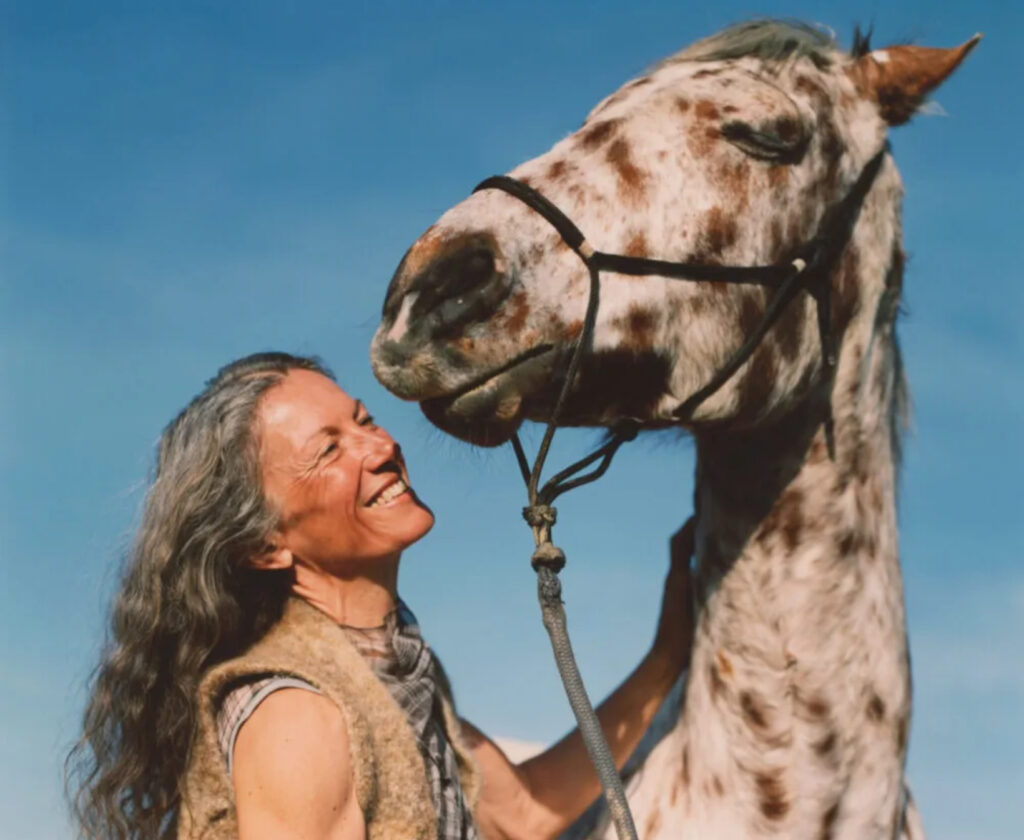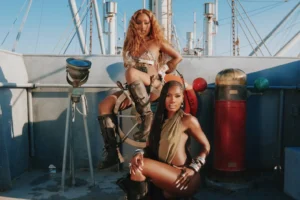The Call of the Bridle Path
It began not with the sound of hooves but with a flickering image: a white horse galloping across a television screen, its mane wild in the wind, as it tore through lake shores and sun-drenched pastures. For most viewers, it was a moment to be forgotten — a beautifully framed commercial destined to dissolve into the din of childhood memories. But for Paola Turello, watching from her home in Moncalieri, just south of Turin, that single frame struck something visceral. “I was instantly struck by its freedom and independence,” she recalls. “It’s a feeling I have carried with me ever since.”
That feeling — of boundless motion, of a life in rhythm with nature’s pulse — never left her. Years passed. City life took its expected course. She worked in publishing. She edited. She traveled, but mostly by plane and train. Still, the image of the galloping horse, unbothered by civilization’s constraints, stayed tucked away in her mind like a childhood secret. And one day, she did something extraordinary: she left it all behind to ride across Italy on horseback, retracing ancient Roman roads and forgotten trails, not as an escape from modern life, but as a deeper reimmersion into the land of her birth.
What emerged was not just a personal journey, but a cultural reconnection — a reminder of the rhythms, pathways, and instincts that predate our highways and algorithms.
The Old Ways Beckon
Italy is known for many things — food, fashion, ruins, Renaissance grandeur — but its equestrian history runs deeper than tourists often see. Long before Italy was Italy, Roman legions and Etruscan traders carved a network of vie antiche, or ancient roads, through the country’s undulating terrain. These paths — some still etched faintly into the hillsides — once carried messages, grain, ideas, and armies across what was then the known world. Today, many of them are disused, covered in brambles, or paved over with modern infrastructure. But some remain — dirt ribbons through vineyards, stone-lined passes across the Apennines, mule trails threading olive groves.
These were the paths Paola sought.
Not the fastest routes, but the ones with soul.
On horseback, everything changes. You are no longer skimming over the land in a vehicle. You are in the land. The horse feels the earth differently than a tire — it reads it. Hills become effortful climbs, rivers a test of trust. Wind is no longer ambiance; it becomes part of the journey, tugging at your coat, your thoughts, your route. And most crucially, the ancient world reveals itself in new textures: a half-crumbled milestone buried in grass, an old wayside shrine, a footbridge nearly swallowed by wild thyme.
Choosing the Horse, Not the Highway
Paola’s decision wasn’t abrupt. It had been building in silence. In her forties, after years working within the tight corridors of Italian media, she began spending more time with horses. What began as leisure rides in the Piedmont countryside slowly turned into a deeper engagement — first as training, then as companionship, and finally as a form of communion. With her Arabian-cross mare, Stella, she started venturing farther. The distances grew. So did the silences.
And then came the idea: why not cross the country?
She plotted a route from the Alps to the heel of the boot, guided not by GPS but by fragments of historical maps, medieval pilgrimage routes, and accounts of long-forgotten travelers. She studied the Via Francigena, the ancient path connecting Canterbury to Rome, once walked by bishops and beggars alike. She traced shepherding routes called tratturi, winding down from Abruzzo into Puglia. She learned to read the land anew — not for speed, but for passage.
Most of all, she wanted to move without enclosure — to see Italy not from the window of a car or train, but with dust on her boots and the rhythmic sway of the saddle under her.
The Language of Motion
Riding for days on end changes the way you measure time. Mornings become slow rituals of grooming, saddling, and checking weather signs. Afternoons are measured in terrain: the pull of mountain switchbacks, the splash of a shallow ford, the rhythmic clink of bridle against bit. Evenings are spent by firelight, not screens. In this way, the journey becomes both external and internal.
“It’s a different kind of time,” Paola says. “It isn’t productive in the modern sense. But it’s deeply meaningful. You begin to understand what pace actually feels like.”
Traveling on horseback also recalibrates the idea of distance. Ten kilometers becomes a full day. A week may cover what a car might conquer in a couple hours. But that slowness is what allows the details to emerge: a fig tree breaking through an old wall; a grandmother offering water from a tin kettle in the midday heat; the soft hush of hooves on sand.
In this way, Paola’s journey was not a conquest of space but a surrender to it.
Encounters Along the Way
Italy’s villages — often bypassed by highways and ignored by travel guides — came alive in Paola’s wake. Children would run to greet her, wide-eyed at the sight of a horse in their piazza. Old men offered stories of cavalry units or farm horses from decades past. Sometimes there was confusion: a lone woman rider arriving unannounced felt out of place in a hyperconnected world. But more often, there was wonder.
“People couldn’t believe someone would take the time to see their town like this,” she says. “It reminded them that they, too, lived somewhere beautiful.”
The horse was the great mediator — a silent bridge between stranger and host. Through Stella, Paola was not just a traveler but a participant in a much older story, one where trust is earned slowly, where curiosity is mutual, and where each village feels like a rediscovery.
She recalls a moment in Basilicata, in the south, when an elderly couple insisted she spend the night in their barn, warmed by hay and homemade soup. “They said they hadn’t seen a traveler on horseback since the 1950s. To them, I was like a memory come alive.”
The Spiritual Terrain
While the journey was physical, it was also metaphysical. There’s a contemplative quality to horseback travel that borders on the sacred. You are exposed — to weather, to injury, to uncertainty — and that exposure creates humility. The earth no longer bends to your convenience. You bend to it.
This humility became central to Paola’s experience. She began to treat the land as a teacher — reading its signs, respecting its moods. When storms came, she found shelter. When the path grew too steep, she dismounted and walked alongside Stella. She learned patience from the stubbornness of donkeys, strategy from shepherds, and resilience from watching her mare power through fatigue.
“You stop fighting the journey,” she says. “You begin to travel with it.”
There were spiritual stops too — hilltop monasteries, roadside chapels, abandoned hermitages. Even for the non-religious, these places offered a kind of stillness modern life rarely permits. At one chapel carved into a cliff in Calabria, Paola lit a candle not for safety, but for gratitude — for being part of something vast and slow and connected.
What Remains After the Ride
Upon returning from her long journey, Paola did not find herself itching to return to city life. If anything, she became more committed to preserving the kinds of spaces and stories her trip revealed. She now documents bridle paths and ancient roads, working with local communities to protect them from development. She teaches others how to travel with horses — not as a novelty, but as a legitimate way to engage with land and memory.
In a time when Italy, like much of the world, is threatened by over-tourism and infrastructural erasure, her work is part of a broader cultural preservation. It’s not about nostalgia, but about continuity. Riding these old paths is a way of remembering that our ancestors lived close to the land — and that we still can.
Her story has since inspired others: riders who plan their own journeys, historians who reexamine forgotten trails, even municipalities that reconsider how they value rural infrastructure. In this way, Paola’s journey becomes a ripple — a quiet one, perhaps, but one that travels farther than she ever imagined.
The Horse, the Woman, and the Map That Breathes
There’s a peculiar beauty in choosing the hard way. It’s inefficient. It’s unpredictable. It’s slow. But in slowness there is presence, and in presence there is grace.
Paola Turello’s journey was never about breaking records or finding fame. It was about inhabiting her country with the fullness of her senses. About listening to the stones beneath her horse’s hooves and the wind through the olive branches. About becoming part of an older Italy — one that still breathes beneath the asphalt.
And perhaps that is the final lesson of her ride. That freedom isn’t found by moving faster, but by choosing where, how, and why we move at all.
No comments yet.








